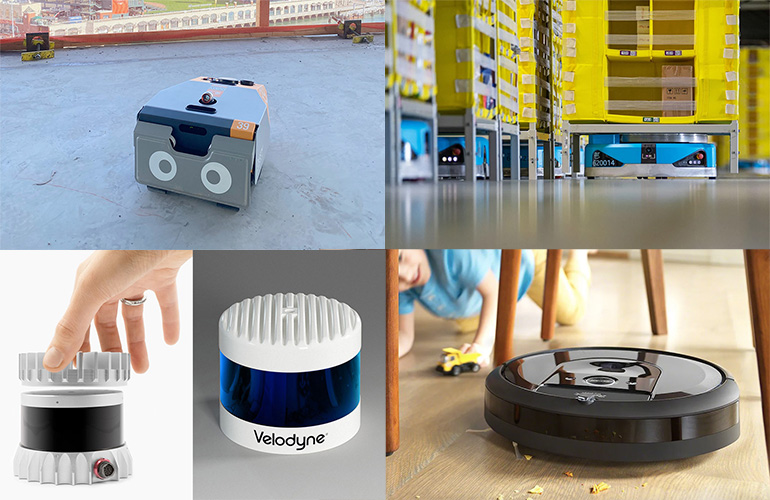|
Listen to this article  |

We kicked off 2022 by asking robotics experts to give us their predictions for the year to come. We heard back from a number of industry leaders including Juan Aparicio, the VP of product development at READY Robotics, Adam Rodnitzky, the COO and co-founder of Tangram Vision, and Deepu Talla, the VP and general manager of embedded and edge computing at NVIDIA.
Now, we’re looking back at some of the predictions they made and how they played out in the robotics industry.
Robot deployments will continue to grow
While the experts we heard from had a number of different predictions about what changes they expected to see in the robotics industry, many of them agreed on one thing: robotics deployments would continue to grow in 2022.
The International Federation of Robotics (IFR) releases information about industrial robot installments across the world. In 2021, the IFR’s report showed that there were 517,385 new industrial robots installed in the year, an all-time high for the industry. Operational robot stock also hit a new record high of about 3.5 million robots that year.
2022 appears to be another big year for robotics installations. While the IFR’s numbers won’t be released until well into 2023, the Association of Advancing Automation (A3) releases quarterly reports on industrial robot sales in North America.
North American companies purchased 35,804 units valued at $1.875 billion in the first nine months of the year, from January to September, 2022, according to A3. This is a 24% increase in units ordered and a 27% increase in revenue over the same period in 2021, setting the industry up to break records again in 2022.
More companies using simulation to test
From industrial robotic arms and collaborative robots to autonomous mobile robots (AMRs) to autonomous vehicles to surgical robots, simulation testing has gained a lot of traction in the robotics industry in 2022. Simulations have become an essential tool for understanding how robots might behave in the real world.
For autonomous vehicles, this means developers can run many simulations simultaneously in scenarios that are too dangerous or complicated to test in the real world. For AMRs, simulations help companies looking to put robots in warehouses understand how they can fit into their existing workflow and where AMRs can best be utilized.
AMRs expand into new markets
The mobile robot market has seen a lot of growth in 2022 as many of our experts predicted. The mobile robot market has seen a 53% increase in mobile robot shipments in 2022, according to Interact Analysis. The company’s report on growth in the mobile robot market includes sales of automated guided vehicles (AGVs) and AMRs.
Mobile robots have been deployed in a variety of markets, in both indoor and outdoor environments. Dusty Robotics has been working to deploy mobile robots on construction sites, while many companies, like Starship Technologies and Serve Robotics, have added several locations for their robotic delivery services. Clearpath Robotics released outdoor autonomy software for mobile robots called OutdoorNav.
While mobile robots have expanded more into new markets, there has also been a lot of growth in mobile robots in warehouses. It would be hard to talk about the year in AMRs without mentioning Amazon releasing its first AMR, Proteus.
Industry continues to consolidate
In 2022 we’ve seen a number of high-profile acquisitions in the robotics industry. Most recently, we saw Intrinsic, a software company that launched out of the X moonshot division of Alphabet in mid-2021, acquire the Open Source Robotics Corporation (OSRC), the for-profit arm of Open Source Robotics Foundation, which is the developer of the Robot Operating System (ROS).
The industry has seen consolidation in LiDAR makers in the past year. LiDAR makers Ouster and Velodyne, two of the biggest players in the market, announced they would be merging in November. The combined company plans to leverage the complementary customer base, partners and distribution channels to accelerate LiDAR adoption. Combined, Ouster and Velodyne have 173 granted and 504 pending patents, and a cash balance of approximately $355 million as of the end of September 2022.
Additionally, MicroVision, a solid-state automotive LiDAR and advanced driver-assistance systems (ADAS) solutions developer, announced that it would acquire Ibo Automotive Systems GmbH for up to $15.8 million.
Other notable acquisitions include American Robotics’ acquisition of Airobotics, Amazon’s $1.7 billion acquisition of iRobot, Astrobotic’s acquisition of Masten Space Systems and Amazon’s acquisition of Cloostermans.
Credit: Source link


Comments are closed.